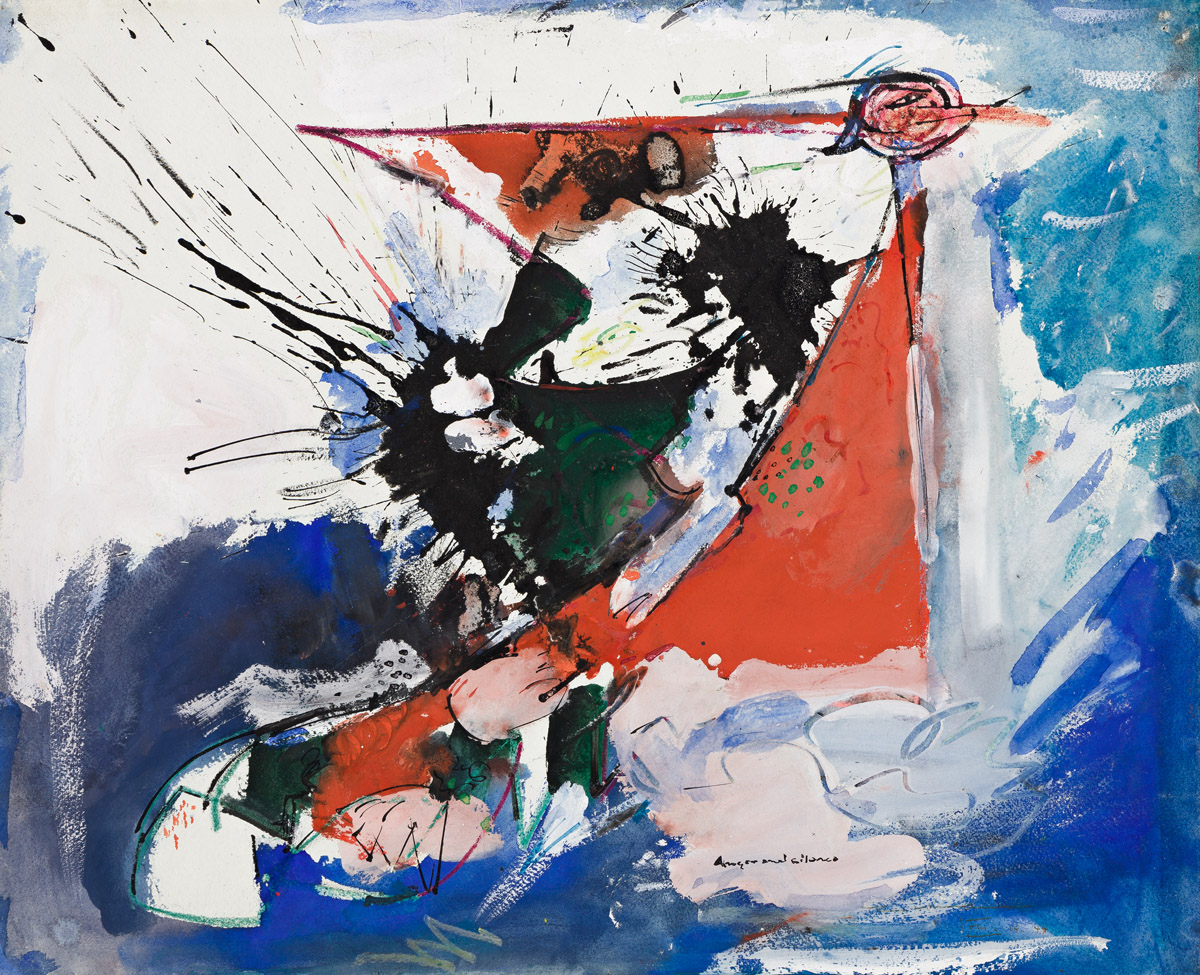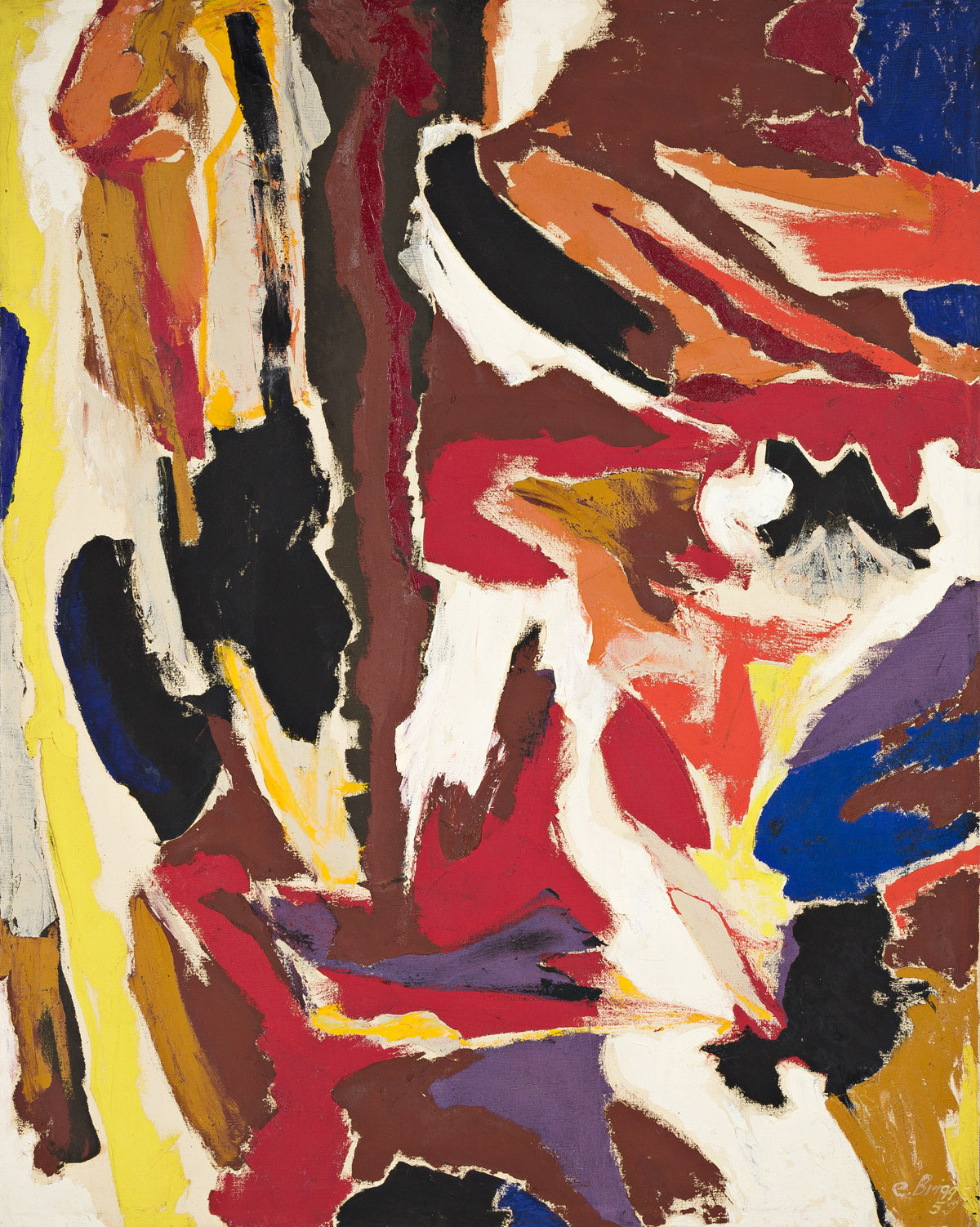Artist Profile: Roberto Kazuya Sakai
Picking a favorite work of art in our season’s auction lineup is kind of like picking a favorite puppy in a litter. I love them all in different ways, and if I could, I would take each lot home with me. One that I find particularly fascinating is Miles Davis Bitches Brew and the life’s work of Argentinian painter Kazuya Sakai. The artwork and life path of Sakai speak to me for his versatility, openness to change, and celebration of the unknown. Through his interests in language, cultures, Eastern philosophy and theater, and jazz music, I see a man with an open mind. Art criticism and analysis require much projection — something which is forgiven because the artist merely provides the vehicle that transports the viewer to a place of openness. Hopefully, this place is new and a bit uncomfortable. As Eleanor Roosevelt said, “Do one thing every day that scares you.”
Roberto Kazuya Sakai was born on October 1, 1927, in Buenos Aires, Argentina. Sakai, Japanese in lineage, moved to Japan in his youth, where he was educated. His formal studies focused on literature and philosophy, graduating from Waseda University in 1951. That same year, he returned to Argentina, where he worked translating Japanese publications on theater and Buddhism into Spanish. Sakai tried his hand at painting early upon his return to Argentina with strong influences from the works of the Gutai Art Association, which he had seen in Japan, and the Abstract Expressionist works of his American contemporaries.
The Gutai Bijutsu Kyokai, (Gutai Art Association) was formed in 1954 in Osaka Japan. The founders of this group were Yoshihara Jiro, Kanayama Akira, Murakami Saburo, Shiraga Kazuo, and Shozo Shimamoto. The group incorporated action and chance, as did the Dadaists and Abstract Expressionists before them. Their works, though following the precedence of Western arts, are more in line with Eastern thought found in Zen Buddhist mindfulness practices.
Kazuya Sakai’s earliest works, created in an expressive Action Painting style, quickly connected him to the works of fellow Argentinian painters of the Grupo de Artistas Modernos. Included in this grouping are Sarah Grilo, Enio Iommi, Tomás Maldonado, Alfredo Hlito, Lidy Prati, and José Antonio Fernández-Muro. Neither Wind nor Banner, a painting sold at Swann in May 2023, is an example of Sakai’s expressive brushstroke exemplified in his earliest works.

In 1963 Kazuya Sakai and José Antonio Fernández-Muro moved to New York city. Serendipitously, in 1964, legendary Director of the Guggenheim Museum Thomas Messer set out to find and promote the works of Central and South American artists to create his show, “The Emergent Decade: Latin American Painters and Painting in the 1960s.” Messer selected Sakai’s The Bridge and grouped his painting in a section of the exhibition catalogue titled “Expatriates: New York.” Living in New York, Sakai was captivated by the American jazz scene. The Bridge, named for Sonny Rollins’s landmark album of the same name, undoubtedly connected with the painter’s feelings of a new chapter in his painting career. Rollins, in 1962, disillusioned by the direction of the music scene, retreated from the limelight, often practicing atop the Williamsburg Bridge. He re-emerged and introduced the world to a new direction in the jazz idiom. Sakai’s The Bridge is a shift away from the heavy gestural brushstroke of his earlier work. He introduces the layering of shapes, words, and lines to create a collage-like composition reminiscent of Manhattan’s layered cityscape.

After accepting a teaching position in Oriental Studies at Colegio de Mexico, Sakai moved to Mexico in 1965, remaining until 1977. In Mexico, his literary interests lead him to co-found, alongside the poet Octavio Paz, the arts and literature magazine Plural. Once again, Sakai’s painting style shifts. The paintings of this period are hard-edge abstraction, utilizing undulating bands of color and often moving through concentric rings. These paintings are known as his Ondulaciones. Many paintings from this time were influenced by jazz music and often had titles that identified them as such.

Miles Davis Bitches Brew was painted in 1973. Again, Sakai chose a monumental jazz album as his title. Davis’s Fusion album, Bitches Brew, moved jazz from the smokey nightclub to the arena, electrifying and competing for audiences of the younger generation with bands like Sly and the Family Stone.
Neither Miles Davis nor Kazuya Sakai followed the status quo. In 1977, Kazuya Sakai once again traveled across borders, moving to Texas, where he accepted the Edward Larocque Tinker Chair in Latin American Studies at the University of Texas. He remained in this position until his death in 2001.










![Grace Meschery-McCormack shares about two copies of Fernando de Rojas’s ‘La Célestine,’ including a limited edition copy illustrated by Pablo Picasso.
At auction April 22. Learn more about the works at the link in our bio.
#Rarebooks #rarebookdealer #antiquarianbooks #auctions
_______________________________________
Music Credit:
Schubert - Piano Quintet in A major ‘The Trout’, D. 667 - IV. Andantino – Allegretto
Music provided by Classical Music Copyright Free on Youtube [https://tinyurl.com/visit-cmcf]
Watch: • Schubert - Piano Quintet in A major ‘...]](https://scontent-iad3-1.cdninstagram.com/v/t51.75761-15/491443494_18499096345036585_5935932878956098058_n.jpg?stp=dst-jpg_e35_tt6&_nc_cat=107&ccb=1-7&_nc_sid=18de74&_nc_ohc=AZ-awqelOZgQ7kNvwFA19hE&_nc_oc=AdkZVODYB5VxTPck7kaEV8QTzHwvQLzaAjo_r9W39mgpTAk2Ix_Bp7bj2bTOpAdxWZY&_nc_zt=23&_nc_ht=scontent-iad3-1.cdninstagram.com&edm=AM6HXa8EAAAA&_nc_gid=RjO-AL8wJB4OsYpWPreXeg&oh=00_AfFe71cdy3TwSfMQhSbjRwO5nQS1iO9djdj-EPTpnGtE0g&oe=680E6091)







